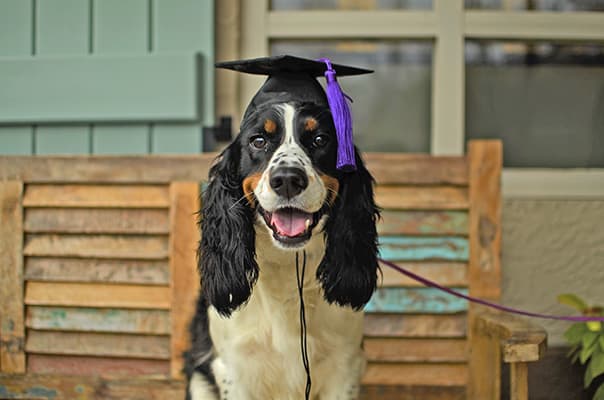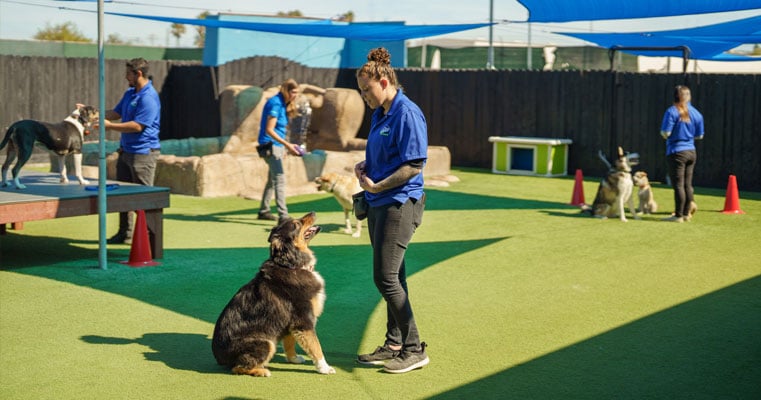How to Integrate Games right into Your Dog Training Regimen
How to Integrate Games right into Your Dog Training Regimen
Blog Article
Important Tips for Successful Dog Training: A Guide for Pet Dog Owners
Efficient canine training is a diverse process that calls for a tactical technique customized to both the pet dog's personality and the owner's objectives. Recognizing how to browse these obstacles can substantially boost the training experience, ultimately changing the connection in between proprietor and dog.
Recognizing Canine Habits
Recognizing pet habits is important for efficient training and cultivating an unified connection between dogs and their proprietors. dog training. Pets interact mostly with body language, vocalizations, and actions, making it vital for proprietors to analyze these signals precisely.

Socialization plays a substantial duty in dog behavior; direct exposure to different environments, people, and other pets can dramatically affect a canine's character. In addition, factors such as breed attributes and specific temperament need to assist training approaches, as some breeds might have specific behavior qualities that necessitate customized approaches. By understanding these components, owners can create a helpful environment that encourages positive actions, bring about effective training end results and a deeper bond with their family pets.
Developing Consistent Commands
Effective communication with your dog starts with establishing consistent commands. This fundamental aspect of training is important for cultivating understanding between you and your animal. Uniformity in the commands you utilize ensures that your canine can dependably connect particular words or expressions with the wanted habits.
When choosing commands, pick clear, distinct words that are very easy to distinguish and say from each other. Stay clear of utilizing similar-sounding commands that might puzzle your canine. For instance, making use of "rest" and "stay" is appropriate, however "rest" and "struck" can cause misunderstandings.
In addition, preserve the very same tone and volume for each command. Dogs are sensitive to vocal hints, so varying your tone can produce complication.
It is equally vital to ensure that all member of the family get on the very same page concerning the commands utilized. A united front in command use will certainly protect against mixed signals and reinforce the learning process.
Favorable Reinforcement Strategies
The power of positive reinforcement in pet dog training exists in its ability to encourage desired behaviors via benefits and appreciation. This method is based in the principle that habits followed by beneficial results are extra likely to be duplicated. By incorporating positive reinforcement right into your training routine, you can properly form your dog's actions in a constructive way.
To execute positive support, it's important to determine what inspires your dog, whether it be deals with, playthings, or spoken appreciation. When your dog does a desired activity, such as remaining on command, immediately compensate them with a reward or affection. This association between the command and the positive outcome reinforces their understanding.
It's important to timing the benefits correctly; providing the reinforcement within seconds of the desired behavior aids your pet make the link (dog training). Additionally, uniformity is key-- ensure that all member of the family use the exact same commands and reward right here systems to prevent complication

Progressively, you can minimize the frequency of deals with as your canine finds out the behavior, transitioning to praise or intermittent benefits. This technique not only cultivates a solid bond in between you and your dog yet likewise advertises a favorable knowing setting, making educating a delightful experience for both.
Socialization and Interaction
Regularly exposing your dog to a range of environments, people, and other pets is essential for their social advancement. Socialization should begin early, ideally throughout the essential window of 3 to 14 weeks, when young puppies are most receptive to new experiences. Nonetheless, older canines can additionally gain from ongoing socialization efforts.
Introduce your pet to various settings, such as parks, pet-friendly shops, and urban locations. This exposure aids them adapt to various stimulations, lowering stress and anxiety and worry actions. Urge favorable communications with various other pets and people, guaranteeing that these experiences are controlled and risk-free to promote self-confidence.
Make use of organized playdates with well-mannered dogs, as this can boost your pet dog's social skills and show them appropriate behavior. Obedience classes and training sessions additionally give superb chances for socializing, enabling your dog to connect with others in a monitored atmosphere.
Display your canine's body movement during communications, as this will help you gauge their comfort degree. Slowly boost direct exposure to even more challenging scenarios while guaranteeing that each experience declares. A well-socialized canine is more probable to exhibit balanced habits, making them a delight to have in any kind of setting.
Dealing With Typical Training Challenges
Every pet owner will run into training difficulties at some time, no matter their pet's age or socialization degree. Identifying usual issues such as stubbornness, disturbances, and fearfulness can aid in developing reliable approaches for improvement.
Distractions throughout training sessions can hinder focus. To battle this, start training in a quiet atmosphere with marginal stimulations. Gradually present interruptions as the dog comes to be extra competent in commands. Short, constant training sessions are also efficient in keeping interest.
Fearfulness can impede a dog's discovering procedure. Progressive desensitization to the source of worry, combined with favorable reinforcement, can help reduce anxiety. Perseverance is crucial; never ever compel a dog into a scenario that causes distress, as this may worsen the problem.
Eventually, understanding and resolving these usual obstacles with a structured approach will certainly foster a much more efficient training experience, enhancing the bond between pet dog and proprietor while promoting reliable understanding.
Verdict
In summary, effective pet dog training counts on a comprehensive understanding of canine behavior, the facility of regular commands, and the application of positive support techniques. Socializing plays a critical duty in establishing well-adjusted pets, while resolving typical training difficulties requires patience and flexibility. By executing these necessary methods, pet proprietors can cultivate a solid bond with their pet dogs and advertise desirable habits, eventually resulting in an unified partnership between human beings why not find out more and their canine buddies.
Understanding pet dog habits is crucial for efficient training and fostering a harmonious partnership between pooches and their owners.Socializing plays a substantial role in canine habits; direct exposure to different atmospheres, people, and various other animals can significantly influence a dog's personality.The power of positive reinforcement in pet dog training lies in its capacity to encourage preferred habits with benefits and appreciation. By incorporating favorable reinforcement into your training routine, you can successfully shape your pet dog's behavior in a positive way.
In recap, effective pet training depends on a detailed understanding of canine habits, the facility of regular commands, and the application of favorable reinforcement methods.
Report this page